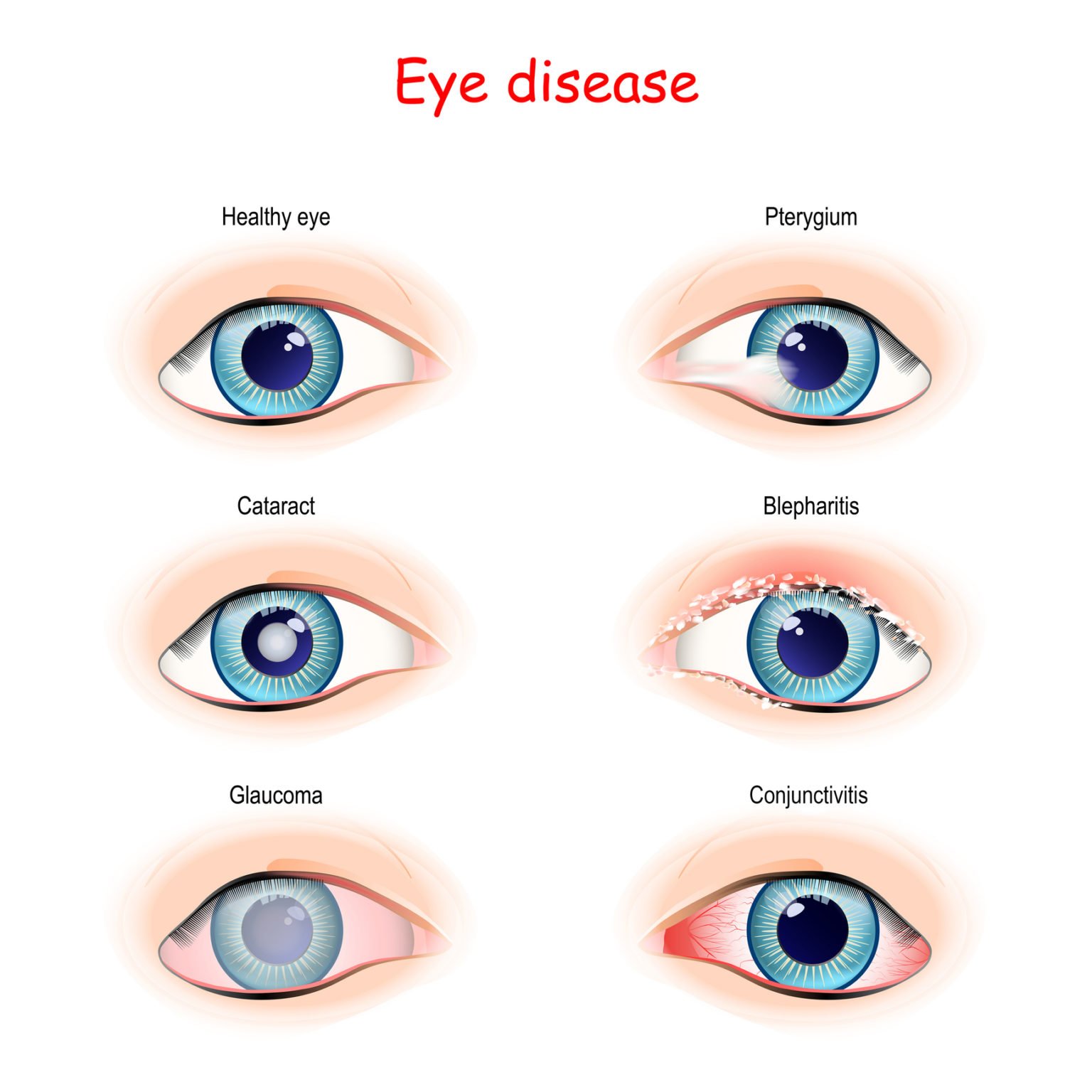What is a Pinguecula?
A pinguecula is a growth that appears as a yellow spot on or yellow bump on your conjunctiva. Usually, it will show up on the side of your eye closest to your nose. It consists of a deposit of protein, fat, or even calcium.
What is a Pterygium?
A Pterygium is another type of eye growth. This kind, however, is a fleshy tissue that may start out smaller (like a pinguecula) and it can grow large enough to affect your vision by covering a portion of your eye.
Both of these growths are said to most likely be caused by having dry eyes. They can also be caused by exposure to wind, dust, and ultraviolet light from the sun.
How can I avoid Pinguecula and Pterygiums?
- Wearing sunglasses to protect your eyes from harmful UV rays
- Protect your eyes from dust by wearing glasses, or goggles
- Use artificial tears or other lubricating drops when your eyes become dry

What are the symptoms of pinguecula and pterygium?
- Swelling and redness of the conjunctiva, mostly while the pterygium grows over the eye
- A yellow spot or bump on the white part of your eye
- Itchy, dry, burning eyes
- Feeling like there is grit or a lump stuck behind your eyeball
- Blurred vision
How would you treat a pinguecula or a pterygium?
Typically, these eye growths do not need to be treated. However, they can be treated if they are causing you some sort of discomfort or if they’re obstructing your vision. A Pinguecula treatment will usually consist of drops to relieve dry eye irritation. They also can help you if you feel as though something is physically stuck in your eye. If the growth becomes unbearable and causes redness or swelling throughout your eye, then Doctor Henderson may prescribe you steroidal eye drops. If the growth is physically affecting your vision or if you cannot bear its appearance, surgery may be a secondary avenue to visit.
A Pterygium treatment can also be treated using lubricated or steroidal eye drops. If the growth becomes large enough to cause vision loss or obstruction, your ophthalmologist will recommend removing it. Your eye surgeon would transplant a thin piece of normal tissue onto the affected area. This specific technique helps reduce the chance that your pterygium will grow back.
The best and easier way to avoid either one of these growths returning is to stay out of dryness, sunlight, and dust.
